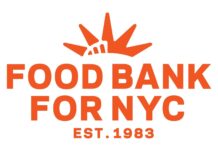SILVER SPRING, Maryland, Dec. 1, 2017 /PRNewswire-HISPANIC PR WIRE/ — Dec. 1 is World AIDS Day and the U.S. Food and Drug Administration (FDA) wants to remind those living with HIV or AIDS about our resource guide on protecting yourself from foodborne illness and safely handling food.

You can get a free copy of the booklet Food Safety for People with HIV/AIDS at: http://www.fda.gov/Food/FoodborneIllnessContaminants/PeopleAtRisk/ucm312669.htm. Or, order a copy by calling 1-888-MPHOTLINE (1-888-674-6854) or emailing [email protected].
Practicing food safety is critical because Human Immunodeficiency Virus (HIV) or Acquired Immunodeficiency Syndrome (AIDS) can damage or destroy the body’s immune system, making that person more susceptible to foodborne illness or “food poisoning.” A person with HIV or AIDS that contracts a foodborne illness is more likely to have a lengthier illness, undergo hospitalization, or even die.
Know the Food Risks
Some foods are more risky for people with HIV or AIDS because they are more likely to contain harmful bacteria or viruses. In general, these foods fall into two categories:
- Uncooked fresh fruits and vegetables.
- Certain animal products, such as unpasteurized (raw) milk; soft cheeses made with raw milk; and raw or undercooked eggs, raw meat, raw poultry, raw fish, raw shellfish and their juices; luncheon meats and deli-type salads (without added preservatives) prepared on site in a deli-type establishment.
Follow the Four Steps to Food Safety
Anyone preparing food should also follow these steps to reduce their risk for foodborne illness:
- CLEAN: Wash hands and surfaces often. Bacteria can be spread throughout the kitchen and get onto hands, cutting boards, utensils, counter tops, and food.
- SEPARATE: Keep raw meat, poultry, eggs, and seafood and their juices away from ready-to-eat foods.
- COOK to the right temperatures. Use a food thermometer to ensure meat, poultry, seafood, and egg products are cooked to a safe minimum internal temperature to destroy any harmful bacteria. Refer to the chart at http://www.fda.gov/downloads/Food/ResourcesForYou/Consumers/UCM462491.pdf
- CHILL foods promptly. Cold temperatures slow the growth of harmful bacteria. Use an appliance thermometer to be sure the refrigerator temperature is 40 degrees F or below and the freezer temperature is 0 degrees F or below.
Know the Symptoms
Consuming dangerous foodborne bacteria will usually cause illness within 1 to 3 days of eating the contaminated food. However, sickness can also occur within 20 minutes or up to 6 weeks later. Symptoms of foodborne illness include: vomiting, diarrhea, abdominal pain, and flu-like symptoms (such as fever, headache, and body ache). These symptoms can be worse for someone with a weakened immune system and lead to long term health effects or even death.
Take Action
If you think that you have a foodborne illness, contact your healthcare provider immediately. Also, report this to the FDA by:
- Contacting the Consumer Complaint Coordinator in your area: http://www.fda.gov/Safety/ReportaProblem/ConsumerComplaintCoordinators
- Contacting MedWatch, http://www.fda.gov/medwatch, 1-800-FDA-1088.
No one has to reveal their HIV status to the FDA when submitting a complaint.
Contact: Media: 1-301-796-4540 Consumers: 1-888-SAFEFOOD (toll free)
Logo: http://mma.prnewswire.com/media/601818/ucm519149.jpg
SOURCE U.S. Food and Drug Administration





